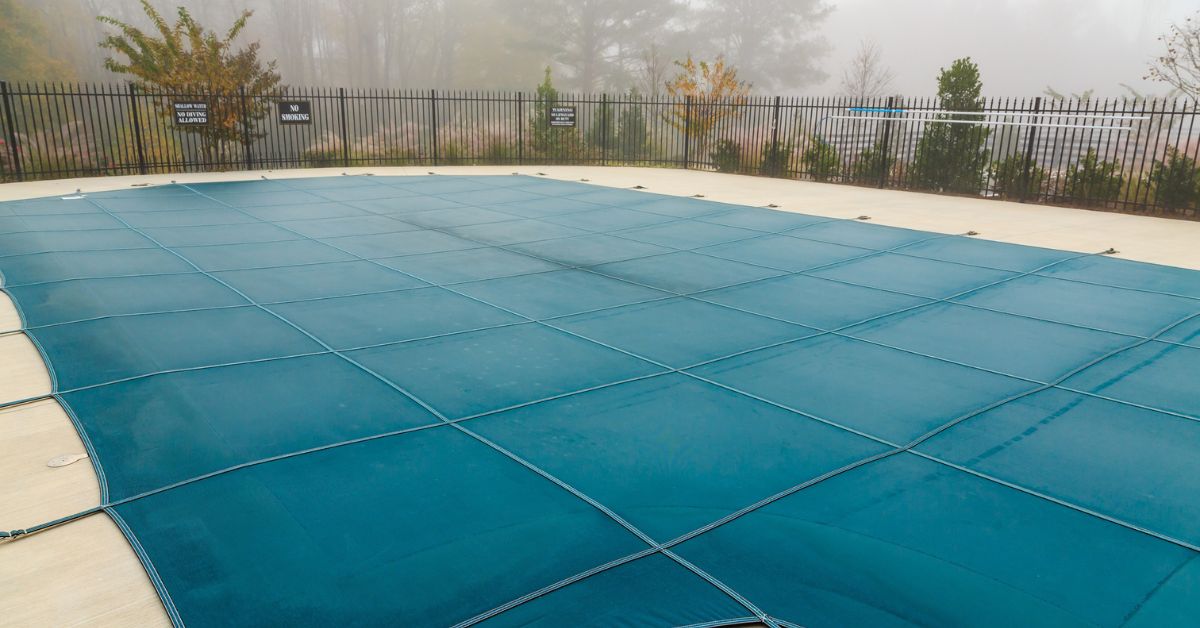Summer is over, which means no pool parties and the closing of your in-ground pool. The fun activities in summer may be done for now, but you will be able to reopen your pool faster next summer.
Proper closing and winterizing of different types of in ground pools is an essential process. It protects the integrity of the pool’s equipment and preserves its cleanliness, so you have to work less when opening it again.
In this guide, we will provide insights and methods for closing the in-ground pools. This will make sure the smooth execution of the process. Let’s dive in to understand the procedure completely.
Why You Need to Understand the Inground Pool Closing Properly
Here are some of the reasons that define the importance of closing the inground pools properly.
Liner Damage
Low temperatures might cause brittleness in your pool liner. This usually happens when there isn’t enough water in your pool to last through the winter. Furthermore, when the liner gets brittle, it is more likely to tear, resulting in costly repairs or replacement.
Algae Growth
Throughout the winter, you should monitor the chemical balance in your pool water. If it gets imbalanced and is left untreated, algae and bacteria can bloom and infect the water. Algae can clog water filters and taint the water, necessitating the total closing inground pool and refilling it, followed by re-treatment.
Pool Cover Damage
The cover is one of the most important factors in protecting your pool. Whether you have an automatic or manual cover, its function is to protect your pool from snow and debris while also keeping the pool temperature stable to prevent freezing.
In ground pool timeline requires up to 12 weeks to build, so be mindful during the installation of the cover and give a proper time for it. If you do not properly position your pool cover, it may rip and expose the pool. Repairing it will be more difficult in the winter, so you risk more after the cover is damaged.
Plumbing Damage
A critical step in winterizing your pool is to completely drain the pipes of water. Any water left behind can freeze and cause the pipes to explode. If your pipes freeze during the winter, you may need to replace your entire plumbing system. So, taking the time to do it right will spare you from having to make a pricey repair.
When to Close Inground Pool?
If your local temperatures normally remain below 65°F (18°C) during the off-season, wait until the temperature drops below that level before closing. Lower temperatures are unfriendly to algae. It allows the water to stay clearer for longer. Make your pool open until the weather cools down to simply clean, test, balance, and use it until it’s time to close.
If your off-season includes many warm days of 65°F (18°C) or higher, you can test and balance the water chemicals on those rare warm days to keep your water cleaner until it’s time to reopen.
Tools Required in How to Winterize Pool
You need certain supplies and tools to execute the procedure. Here is the following list below.
- Pool chemicals include shock, algaecide, and alkalinity boosters like Baking Soda.
- Pool cover: either a safety or security cover.
- Winterize expansion drain plugs.
- To blow out water lines, use an air compressor, shop vacuum, or blower.
- Lubricant for valves and O-rings.
- Pool cleaning equipment (such as a vacuum, brushes, and cleaner).
- Stain and scale remover/preventative.
- A safe area indoors to keep pool accessories, skimmers, filters, and other removable components.
- Optional: pool antifreeze for equipment and lines.
How to Close an Inground Pool for Winter?
Take a few days to thoroughly close your pool for the winter. Several stages are required to clean and balance the pool water, and the chemicals must be dispersed over time.
Deep Cleaning of the Pool
To deep clean the pool, remove all floating debris, such as leaves and dirt. Vacuum the pool well, then brush the walls. If your pool has a number of algae or is really dirty, bypass the filter and suction waste out the backwash pipe to avoid having to constantly remove and clean the filter. Cleaning the pool thoroughly will make it easier to balance the water chemistry and avoid mold and algae growth throughout the winter.
Assess and Balance Ph and Alkalinity Levels
Maintain the appropriate calcium, pH, and alkalinity levels in your pool water.
- pH: 7.2 – 7.8
- Alkalinity: 80–120 ppm.
- Calcium Hardness: 180–220 ppm
Expert Tip: Adding baking soda to your pool can enhance its alkalinity and pH.
Shock the Pool
Add shock treatment according to the package guidelines. Allow the water to circulate for 24 hours before re-shocking, if necessary until chlorine levels approach 1.0 – 3.0 ppm. Never use chlorine shock and algaecide in the pool at the same time while closing the inground pool.
Apply Algaecide and Winterization Treatment
The shock treatment eliminated bacteria, but you’ll need algaecide to destroy the algae. It’s also a good time to put stain and scale remover on your pool before closing it up for the winter. Follow the package guidelines and make sure the chemicals are uniformly distributed throughout the pool. If you want a water-tight seal for your pool, you can check our website and contact us for poolside plastering.
Disconnect Pool Accessories
Remove all accessories, including skimmers, ladders, and floaters. Use a mixture of two-quarters baking soda and one-quarter water to hose off or scrape clean. Rinse and let dry fully before storing.
Alternatively, soak removable pieces in a bucket of baking soda and water mixture, then brush, rinse, and dry.
Baking soda neutralizes acids and is effective on plastic and metal parts due to its low abrasiveness. To clean chrome fixtures, follow these steps.
Combine ¾ cup baking soda and ¼ cup water to produce a paste. Spread on your fixtures and allow to sit for 15-20 minutes. Wipe away the mixture with a microfiber cloth, revealing the shining, clean chrome underneath.
Drain the Pool Pump and Heating Equipments for Winter
Turn the filter pump off. Disarm the drain plugs to drain the water from your pump, filter, chlorinator, and heater. If possible, keep your filter and pump inside. Employ a shop vac or air compressor to remove any remaining water from your equipment before the inground pool closing.
All water must be drained or blown away to avoid freezing or breaking. Now is also a good time to consider lubricating your equipment’s valves and o-rings.
Winterize the Pool Plumbing
To close inground pool, with a shop vac or air compressor, blow out the lines from the skimmer, through the equipment, and back into the pool. Plug all pool lines with expansion plugs. Alternatively, follow the packaging instructions to add swimming pool antifreeze to the lines.
Cover the Pool for Winter
Place the pool cover across the pool. Make sure your pool cover fits tightly, whether it’s mesh or solid. Throughout the winter, inspect your pool cover to ensure that it is secure.
Final Words
These are the essential steps to close inground pools. By taking them on hand, you can elevate and enhance the integrity of your pool during the winter season. Our weather leaves an impact on the outdoor parts of the house and so on the pools. This guide will make you ready to beat the weather smartly and preserve your inground pools.






